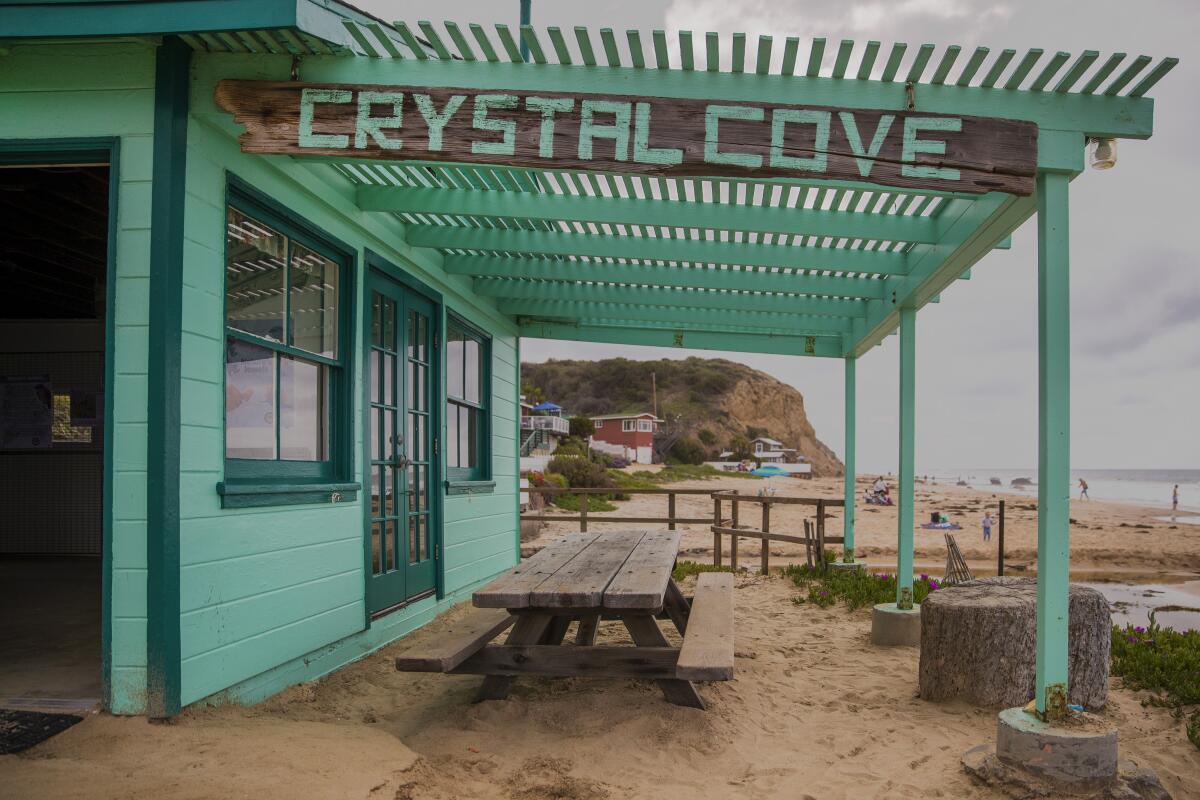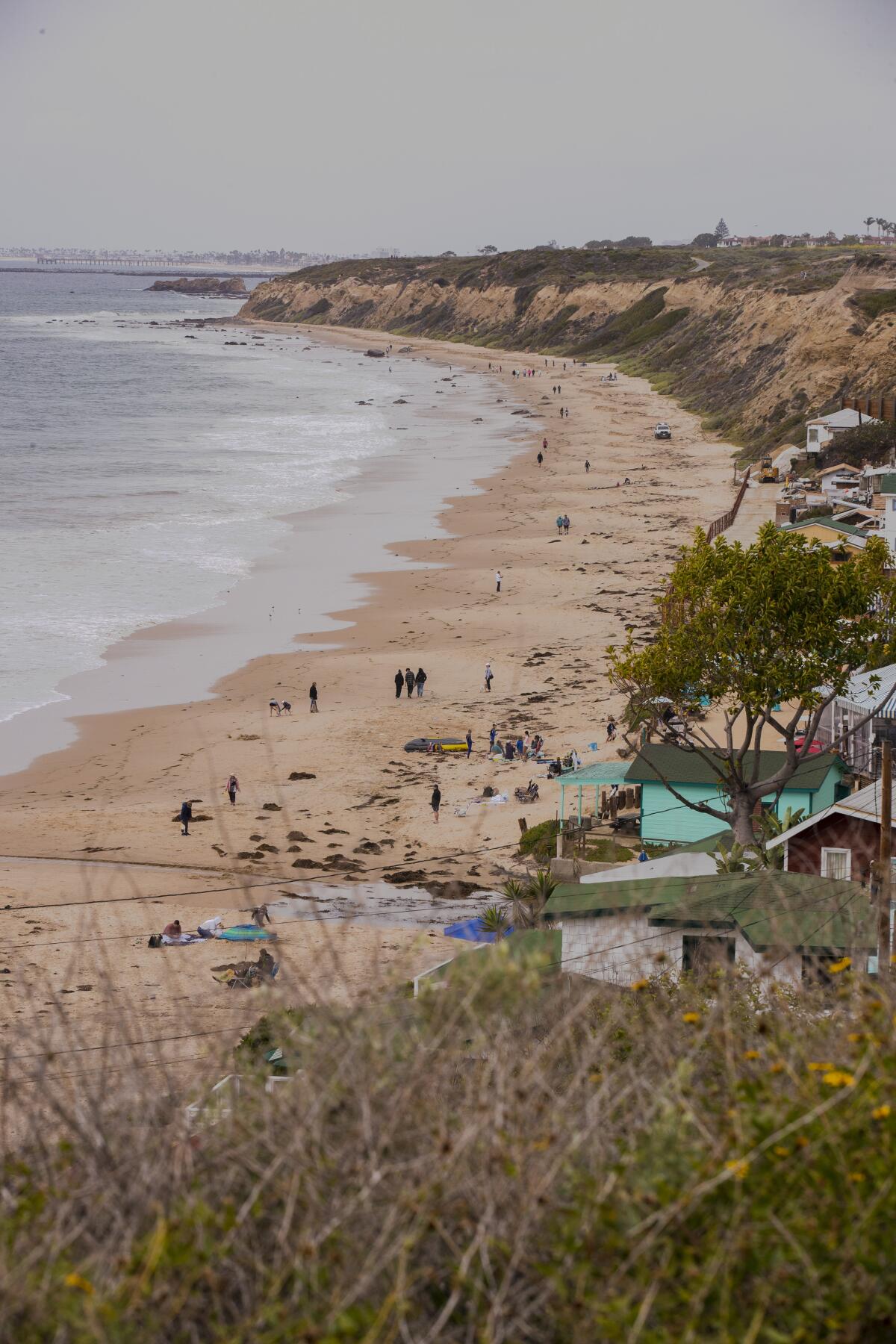Almost $3 million spent on Crystal Cove cottage rehabs in 2021, conservancy reports

- Share via
Historic cottages at Crystal Cove in Newport Beach received nearly $3 million in restoration work last year, according to a report issued by the the nonprofit responsible for the preservation of the state beach.
In its annual impact report issued earlier this month, the Crystal Cove Conservancy said that in 2021 a total of $4.4 million was invested in the improvement and maintenance of the property where the seaside cottages were constructed between the 1920s and 1940s, with $2.8 million of that spent on actual cottage restoration work.
About 28 of the 45 existing cottages, including the Japanese language schoolhouse known at the site as Cottage #34, have seen restoration. The 17 remaining cottages have sat unoccupied and left to deteriorate behind a chain-link fence for some 20 years, but restoration efforts on those buildings have been undertaken by the Heritage Legacy Project for California.
Five of the cottages were mostly restored and are “in great shape,” according to director of advancement Cindy Otto, who noted that pending work includes outfitting each with era-appropriate furniture and installing new window treatments.
“They still probably won’t open until the fourth quarter this year, but we’ll open them as we go,” said Otto.

Otto said renovations chiefly deal with four to five cottages at a time. With four finishing up this year, the next four will be taken on.
While several cottages are available to the public for overnight rentals now — and are very much in demand — it will be a few years before all 45 cottages will be ready and available to rent.
Rental fees are earmarked for maintaining the state beach’s historic structures and funding special projects. Leftover funds are passed through to support K-12 STEM educational programs.
Conservancy president and chief executive officer Kate Wheeler confirmed in a statement that the funding for the restoration efforts is mostly secured, though the nonprofit expects the gap remaining will be filled with historic tax credit revenue.
“But that is a very complex process, which will take some time to complete, but our sense is that there will be enough revenue secured to complete the funding required,” said Wheeler.
Updating the infrastructure for the 17 unoccupied cottages was completed in November 2020. Initial estimates for their restoration was placed at $45 million. More than $25 million of that has been secured by the conservancy, according to the nonprofit’s website.
Numbers reported for the fiscal year of 2020-21 indicate the conservancy earned about $8 million in revenue in 2021, with close to $7 million spent in that same calendar year.

The conservancy also reported at least 650 feet of boardwalk has been built and about 9,000 students attended educational programs at Crystal Cove in 2021. Otto said the conservancy launched two new programs in the last year for students: including one called “The Trouble with Trash” for kindergarten through second grade about plastic pollution and the “Fire Ecology Internship,” which is run in conjunction with the Irvine Ranch Conservancy.
That program invites high schoolers to study the impact of fire on Orange County’s wildlife and urban areas.
“We are delighted to see the North Beach restoration so far along and with so much support,” said Wheeler. “With the heavy lift on that project behind us and the first five North Beach units coming online, we all have our heads down planning for what’s next: stepping into a more expansive role in supporting parks in land stewardship and conservation work, fully developing our coastal engineering programs, and finding new ways to include diverse communities, including Indigenous communities, into the work.”
All the latest on Orange County from Orange County.
Get our free TimesOC newsletter.
You may occasionally receive promotional content from the Daily Pilot.




